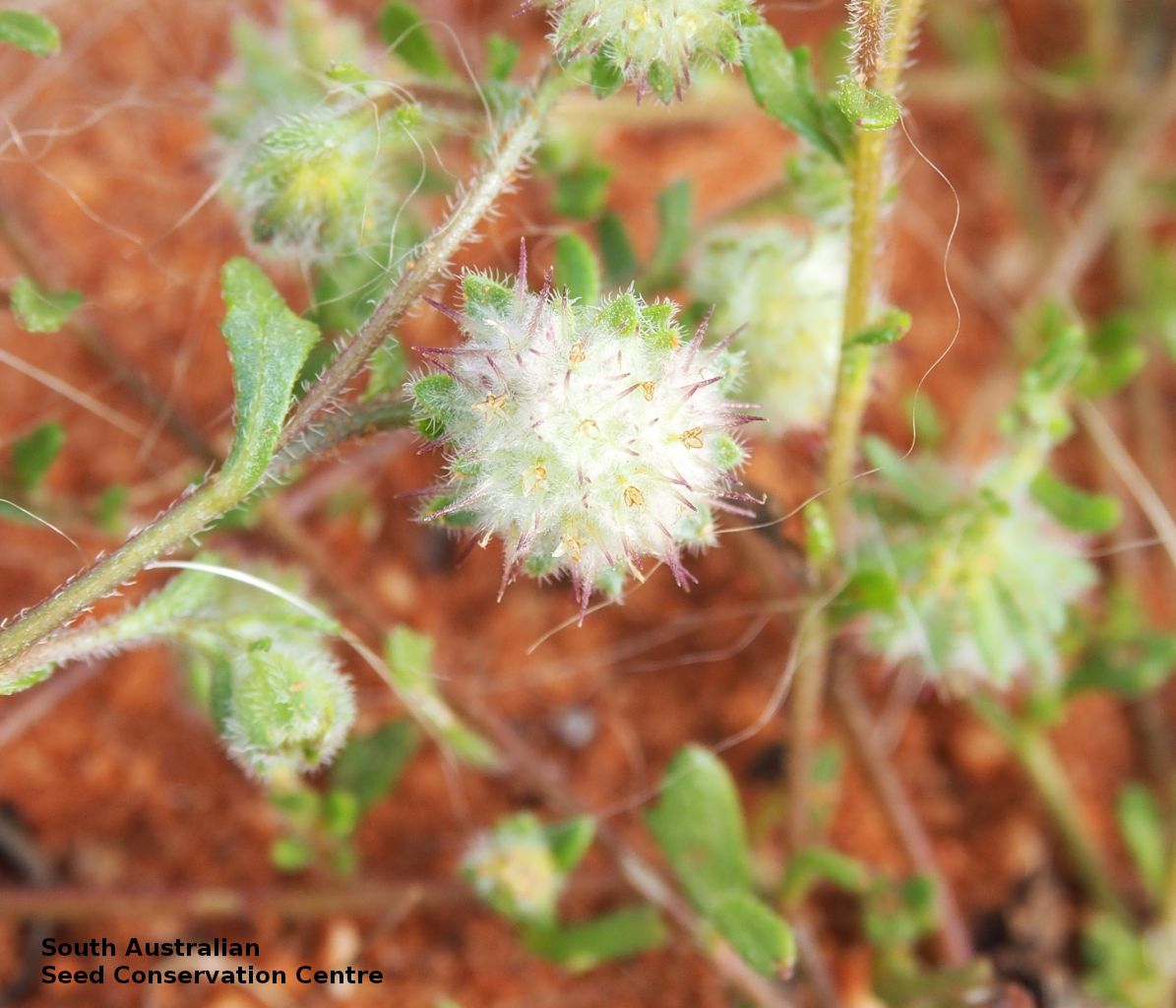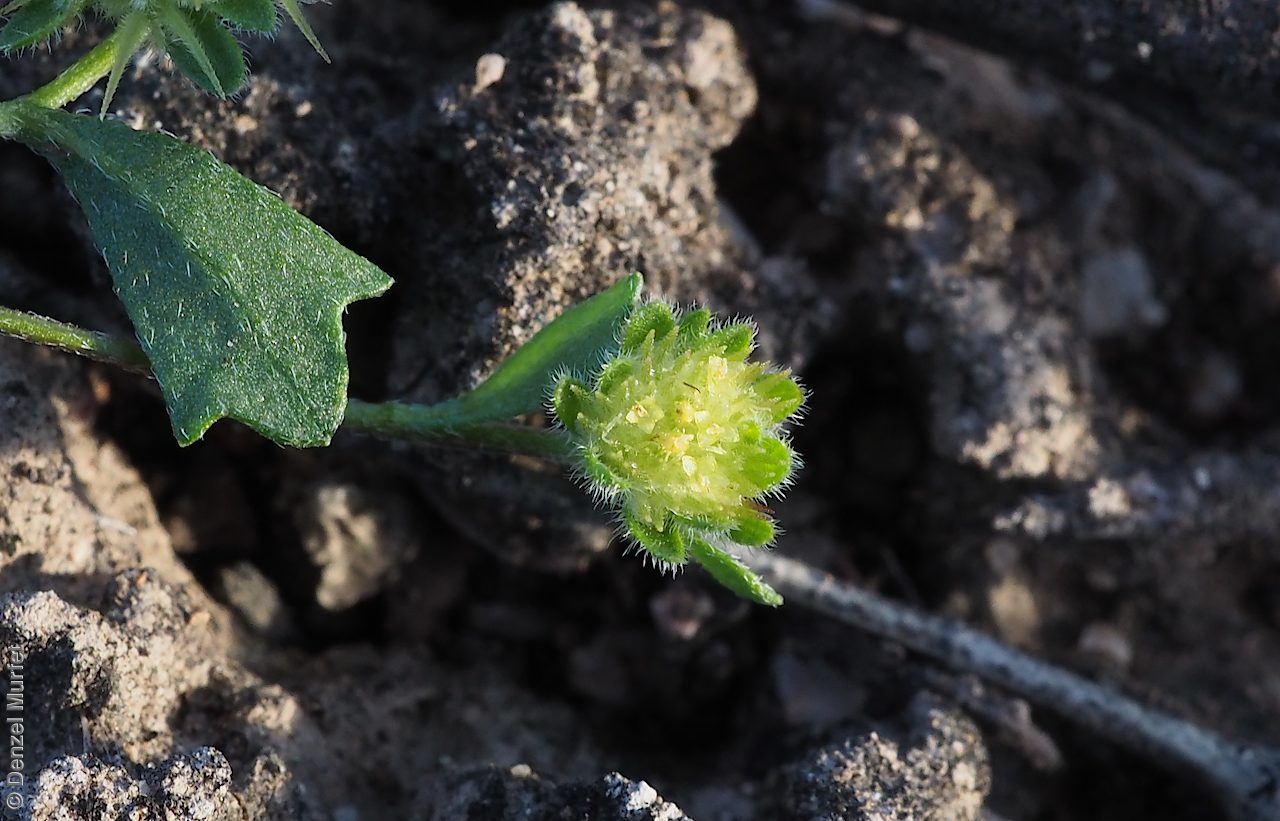












Botanical art
Prior names
Cheiroloma hispidulum
Common names
Hairy Burr-daisy
Bogan Flea
Etymology
Calotis from the Greek 'kalos' meaning beautiful and 'otos' meaning ear, after the first species named in the genus Calotis cuneifolia which has an ear-shaped pappus. Hispidula means covered with minute stiff hairs or fine bristles.
Distribution and status
A very common species found across South Australia except on Kangaroo Island and the lower South-east, growing in a wide variety of communities and soils ranging from heavy clays to shallow stony soils. Also found in all mainland States. Native. Common in South Australia. Common in other States.
Herbarium regions: North Western, Lake Eyre, Nullarbor, Gairdner-Torrens, Flinders Ranges, Eastern, Eyre Peninsula, Northern Lofty, Murray, Yorke Peninsula, Southern Lofty, Green Adelaide
NRM regions: Adelaide and Mount Lofty Ranges, Alinytjara Wilurara, Eyre Peninsula, Northern and Yorke, South Australian Arid Lands, South Australian Murray-Darling Basin
AVH map: SA distribution map (external link)
Plant description
Annual prostrate or ascending herb to 10 cm high, hairy. Leaves sessile, cuneate to oblanceolate to 2 cm long and 7 mm wide. Flower-heads numerous in dense leafy cymose panicles, ray florets yellow. Flowering between June and October. Fruits are dense round spiny fruit-head. Seeds are red-brown semi-flat pyramid-shaped seed to 3 mm long, covered with hairs and with spines at the wider end. Seed embryo type is spathulate.
Seed collection and propagation
Collect seeds between September and December. Collect mature seed heads that are dried and turning brown by picking off the heads and placing them in a paper bag. Be careful as the heads are spiny. Leave the heads in the paper bag to dry for at least a week. No further cleaning required if only the heads are collected. If other material were collected, use a sieve to separate the unwanted material. Whole heads can be stored with a desiccant such as dried silica beads or dry rice, in an air tight container in a cool and dry place. Seeds are non-dormant, viable seed should germinate readily. 1. Germination 100% on 1% w/v agar, 8/16 dark/light, 10oC. 2. Germination 100% on 1% w/v agar 8/16 dark/light, 15oC. 3. Germination 100% on 1% w/v 8/16 dark/light, 20oC. See http://data.kew.org/sid